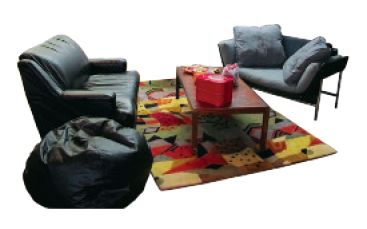New York is a city of places to run from your mother—including but not limited to strip clubs, racecourses, and a bar called Mother’s Ruin (18 Spring Street)—but guilty children may find themselves drawn to the Museum of Motherhood. Dreamed up ten years ago by ebullient former pop star Joy Rose, fifty-five, mother of four, the M.O.M. busies itself in the basement of a mother-friendly apartment building (Upper East Side, doorman in uniform). An impassioned screed from Ms. Rose bedecks the stairwell: “I can think of no other subject so wildly misunderstood, underfunded, and understudied.”
That quote comes into focus with a gasp when you step down to see the museum itself, windowless and lit by icy bars of halogen. It’s like stepping into a dying party that your mother is trying to make the best of. Would you like a snack? There are snacks. Coffee? Water? If you feel tired just sit in the massage chair. It’s a new chair. Rest your feet. It massages. Organic lollipop?
Like a church, the M.O.M. is a communal space devoted to an experience that is always singular, personal: your mom. But motherhood, such as it is, begins for all visitors just across from the ticket counter: portraits of pregnant bellies knotted in red string, plastered with newspaper, or painted with a road map, each as distinct as a mother. Next, run your fingers through strings of velvet in bloody purples that drip from the ceiling. “It simulates the birth figuratively,” explains the docent.
Born, you are ready to enter the grand floor-space, a fenced-off playroom where children cavort while mothers read exhibits—an idea that sets this museum apart from, say, MoMA, which seems in comparison to suffer a lack of tricycles and baby dolls. (You must take off your shoes to enter, which gives the grand floor the sacred feel of a temple guarded by mothers who have just mopped.) Exhibits twist around the play-area wall, starting with a photo essay of diptychs: mothers doing mother-work, laborers doing the same—a laundress and a laundress, a cook and a cook. One set is paid, the other underfunded.
By this point you have been broken like a colt. Mother, mother, I’m sorry! But there is always more to the rich triumvirate of mothers and suffering and guilt. Printed on columns studding the basement are posters that detail “Birth Practices through the Ages,” starting with an...
You have reached your article limit
Sign up for a digital subscription and continue reading all new issues, plus our entire archives, for just $1.50/month.
Already a subscriber? Sign in





